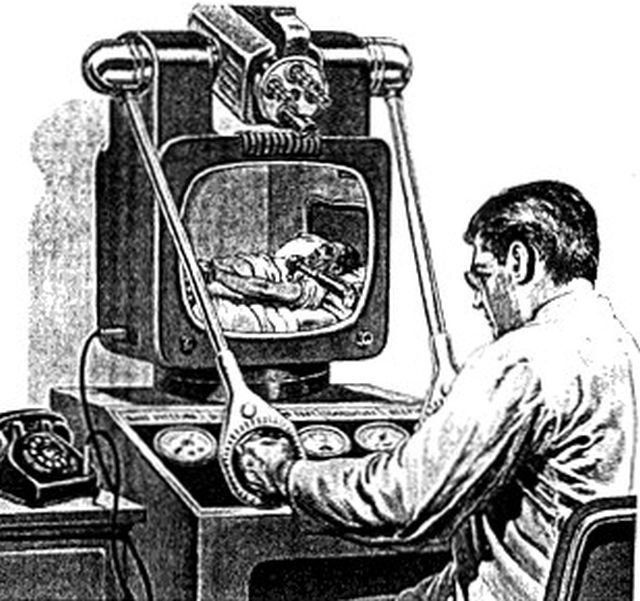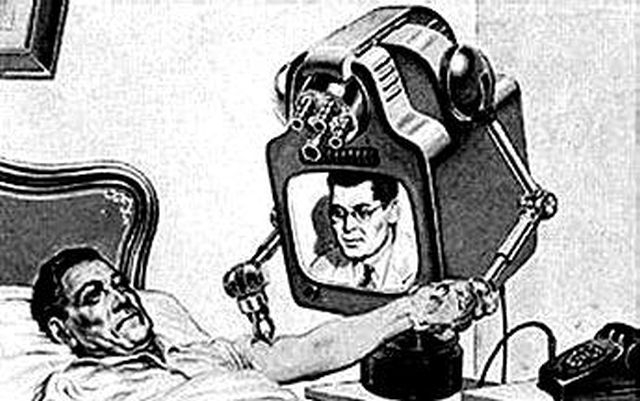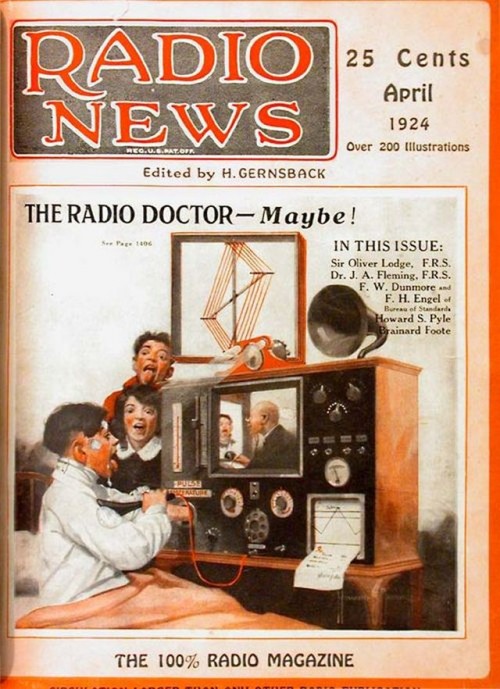Gernsback, Hugo "The Teledoctor", Television, Feb. 1955 pp. 22-24.
Hugo Gernsback's 1954 solution to the doctor shortage was the ultimate in bringing the patient to the overworked physician: an updated version of the 1924 Radio Doctor called the "Teledoctor."
Delivered to your front door on a rental plan, this melding of television and diagnostics was supposed to be capable of measuring blood pressure, pulse, respiration, and even had a built-in stethoscope.
But it wasn't just a remote monitoring device with a two-way television attached, it also incorporated the latest in remote-controlled robot hands (or claws in this case) that allowed the attending physician to administer tests, write prescriptions, give injections, bandage wounds, and even perform minor surgery from the comfort of his office.
All this television interchange, data traffic and robot-manipulation signal was transmitted through an ordinary phone. It's interesting how the television apparatus pictured here looks the right size for 1954, but the mechanical arms and such take up surprisingly little room even by today's standards.
Notice also that the mechanical arms on the patient's end have elbows, but the doctor's control rods don't, which would have made it a bit like performing surgery in a pair of arm casts. Above images and text sourced from David Szondy.
The hand controls on the doctor's master arm are reminiscent of John Payne's 1948 manipulator arms.
It wasn't until 1954 that Ray Goertz developed his Electro-Mechanical Manipulator. As well as offering force-reflection (force-feedback), it was acknowledged to offer the capability to operate the slave remotely from the master (because it is electrically coupled, not mechanically coupled). This extended remote control materialized with Goertz's Remote Servo-manipulator in 1958.
See other early Teleoperators here.


